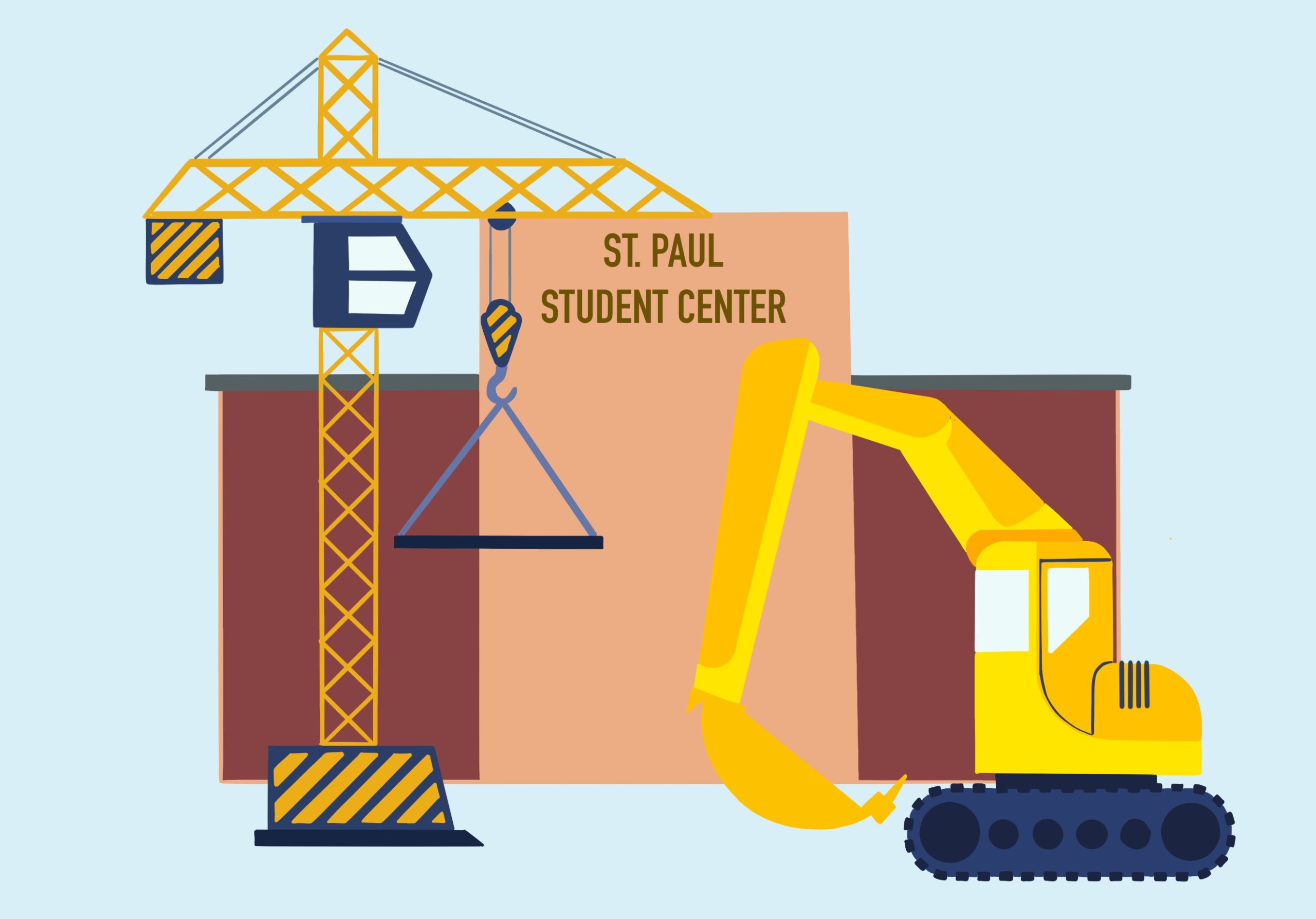The title of Tuesday’s Daily article on the Coffman Union project was accurate in that the term “complex” was used. Because it is so complex, several points in the article were inaccurate or incomplete.
First of all, when Assistant Vice President Jim Turman referred to Coffman’s request as not being atypical, he was referring to the fact that student services fees have historically funded capital projects related to student services. Student fees have funded the capital costs for Boynton Health Service (1991), Recreational Sports facilities (1987, 1990 and 1996) and the student unions (Coffman, 1939, 1974; West Bank Services, 1980; and St. Paul Student Center, 1959).
Julian Kubesh, a member of the fees committee, said “it’s not very traditional to request more than double what you had before,” and “I don’t think it’s been done before.” While we agree that doubling a fee in any given year is not typical given that you’re just maintaining an operation, we would like to clarify that Coffman’s request is not just to maintain our building, it’s to renovate it. Renovation is something that is done when a building no longer meets the needs for which it was intended. So while this request is one which a fees committee wouldn’t see for another 20 to 30 years, it isn’t unusual for renovation years. We realize the renovation will require a big sacrifice on the part of students, however, we disagree with his statement that it’s never been done before. In fact, in the 1930s, during the depression, students more than doubled their fees to build Coffman Union. While the 1970s renovation didn’t double student fees, the renovation was completed with a fee increase and a Housing and Urban Development subsidy. The HUD subsidy is unfortunately not available today.
We acknowledge that many students may be unclear about how much it will cost them, but we ourselves just learned three weeks ago of the most accurate cost estimate. Since that time, we’ve been preparing to take this information out to the students and last week, we started conducting “Coffman Renovation Roadshows” for student organizations on campus, educating them on the Coffman project, explaining what they can have in a renovated union and what those improvements will cost them. So far, support has been quite positive, with far more than 50 percent of those students signing a petition supporting raising the fee by $30 annually for the next 3 years and then maintaining that level for the duration of the bond.
The article also states that it is unclear if students know that they will be paying for it all. This is misleading, as students will not be paying for it all. The story later correctly states that $5 million in renovation costs will come from Coffman Union through revenue it generates from tenants such as University Dining Services and the bookstore.
The statement that the renovation would “include installing air conditioning in the building, expanding student organization office space, adding a 24-hour computer lab and increasing food availability and selection” was incomplete in that it sounds as if that is all the renovation will provide. We hope to be adding many more services and facilities students want as well as maintaining services we currently have. Aside from those services listed, things like a bookstore, quiet lounge space, more accessible short-term parking, possibly a movie theater, longer operating hours, open more days a week and satellite registrar and bursar offices are also seriously being considered. We also intend to keep services we currently offer such as the post office, copy center and discount ticket office. One student was even quoted as saying, “If I’m paying more, I want more.” We couldn’t agree more! That’s why we have spent so much time surveying students to find out what they want in a renovated structure. The plans reflect what students want and the bottom line is the renovated building will give students more bang for their buck.
The article then quotes Coffman director Maggie Towle as saying the student services fees request “is not the sun, the moon and the stars.” Towle was not referring to the fees request, but was referring to the renovation cost. We have spent several years assessing the cost to renovate the 59-year-old building. Coffman is known as being “the most studied building on campus.” To simply air condition the building and bring it up to code will cost $15 million. The remainder of the renovation costs are to renovate existing space and create new spaces that can address services and facilities that students have identified as their top priority for Coffman. The Coffman Board of Governors and the building advisory team chose a low revenue model in developing the financial plan for renovating Coffman. This was done for one reason; students have been very clear that they do not want Coffman to be too commercial or to feel like a shopping mall. Therefore, by funding Coffman through student services fees, we can limit the amount of commercial tenants in our building, thus allocating more space for lounges, study rooms, a computer lab and other services designed specifically for students.
Increasing student fees to fund the renovation wasn’t our first funding option, but because we don’t receive legislative dollars, we had few other options. Last year the student services fees committee asked us to explore fund raising. However, a recent fund-raising feasibility study told us that private fund raising is not an option for us, as no potential donors were identified and academic programs rank much higher than student union facilities as fund-raising priorities. Our options to create corporate partnerships are limited by institutional priorities and by the fact that private sector businesses will not come into Coffman unless it is financially viable for them. In its current state, Coffman will not attract or retain successful businesses.
Towle also was misquoted on a recent survey statistic. The statement “Towle said Coffman Union officials conducted a survey in which 77.6 percent of students agreed that union renovations should be student-funded” was inaccurate. What Towle actually said was “Coffman’s Board of Governors conducted a survey where, of the people who had an opinion, 77.6 percent agreed or strongly agreed that student fee dollars should support the student unions.” This statistic made no mention of renovation support; it just measures overall student support for student unions on the Twin Cities campus.
The article states that students currently pay $29.41 per quarter to Coffman Union for salaries, supplies and to maintain the facility. However, that funding pays for much more including the hundreds of programs our student program council plans each year like Winterfest and Spring Jam. It also maintains operations within the facility such as the convenience store, game room, post office, arts and crafts studio, mini-courses and free student meeting rooms.
The “last ditch effort” referred to by Towle was true. Plans for the new parking garage and new housing to be added behind Coffman are well underway. There are also plans to make the front of Coffman a major transportation hub with access directly into Coffman from Washington Avenue through the existing Coffman garage. If Coffman is not renovated now, it will be too late to connect it to the transportation hub, the parking garage or the new housing. It will be a decaying eyesore in the midst of a new development on the South Mall and many newly renovated buildings on Northrop Mall. Absent a major renovation, Coffman Union is not likely to survive.
We are a building of the students, for the students and by the students. If we do not support the future of Coffman, there will be no future. Yes, it is a sacrifice, just like the students of the 1930s and 1970s sacrificed for us. But by year three of the phased-in increase, it will cost students just an extra 25 cents a day to have a place they can call their own. They’ll have a space to hang, study, meet friends, see a movie and join a student group. They will be able to use computer labs, the bookstore, a game room, convenience stores, a copy shop, etc. But most of all, students will have a place where they can feel free to express their point of view in a safe environment and to meet people outside of their academic discipline.
It is extremely difficult to understand all the work that has been completed in the last decade preparing for the Coffman renovation and therefore we do not fault the Daily for overlooking these facts. However, this project is so important, we felt students need to have a complete picture. Our best advice to those of you who wish to know more about our renovation fees request is to attend our fees presentation this Saturday, Feb. 6, 1999. It will be held in the Mississippi Room of Coffman Union at 10 a.m. While it is open to the public, this is not an open forum. The only people allowed to ask questions or interrupt the presentation are members of the fees committee. If you are not able to attend, you may also visit our Web site at www.coffman.umn.edu, visit and comment on our renovation display located at Coffman and St. Paul Student Center or e-mail us at [email protected]. You can also voice your opinion during student services fees public forums on Feb. 24, 25 and 26 (times and place to be announced).
Jorg Rivera, President, Coffman Memorial Union Board of Governors and, senior, political science, College of Liberal Arts.
Cale L. Schultz, Vice President, Coffman Memorial Union Board of Governors and, senior, Carlson School of Management.
Daily Email Edition
Get MN Daily NEWS delivered to your inbox Monday through Friday!

Published May 1, 2024

Published May 1, 2024

Published May 1, 2024
Trending
Coffman renovation needs clarity
Published February 4, 1999
Leave a Comment
Advertisement
The Minnesota Daily • © 2024 The Minnesota Daily • Privacy Policy • FLEX Pro WordPress Theme by SNO • Log in







